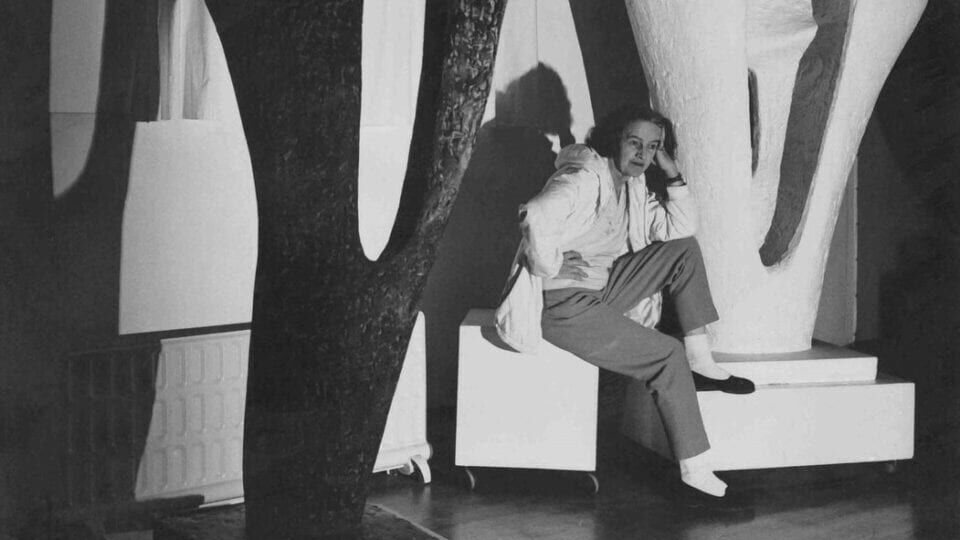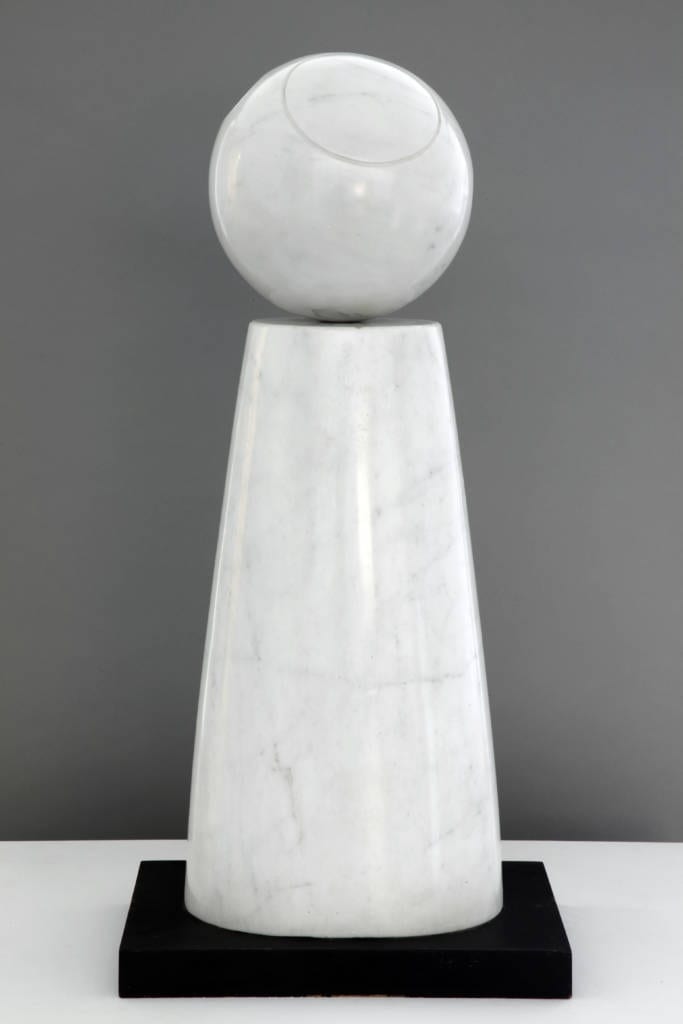“Barbara Hepworth (1903-1975) is one of the most important artists of the 1900s, with a unique artistic vision that demands to be looked at in-depth. Deeply spiritual and passionately engaged with political, social and technological debates in the 20th century, Hepworth was obsessed with how the physical encounter with sculpture could impact the viewer and alter their perception of the world.”
Eleanor Clayton is a curator at The Hepworth Wakefield and a Hepworth specialist. She is the editor and contributing editor of Howard Hodgkin: Painting India, (2017) Lee Miller and Surrealism in Britain (2018) and author of Viviane Sassen: Hot Mirror (2018). Her latest title, Barbara Hepworth: Art & Life (Thames & Hudson, May 2021) coincides with the major exhibition, charting work from the 1920s to the early 1970s.
The exhibition opens with an introduction to the artist, showing the three key sculptural forms she returned to re- peatedly through a variety of different materials – from bronze casting and gray alabaster to marble, silver, Burmese wood and limestone. A detailed look at Hepworth’s child- hood in Yorkshire also includes some of her earliest known paintings, carvings and life drawings as she began to explore the human form. Here, audiences can see how Hepworth was a proponent of direct carving, combining an acute sensitivity to the organic materials of wood and stone, with the development of a radically new and abstracted formal language.
Moving on chronologically, a large section considers Hep- worth’s development of abstraction in the 1930s, including Three Forms (1935), created shortly after she gave birth to triplets, an event she felt invigorated her work towards a bolder language of geometric form. The show then takes various pathways into the 1950s and 1960s, before later work inspired by space exploration and Neil Armstrong’s first steps on the moon – a hinge-point for the artist. Hepworth famously noted: “Man’s discovery of flight radically altered the shape of our sculptures, just as it has altered our thinking.”
The show will be a huge event in the artistic calendar, with Barbara Hepworth retrospectives famously bringing in hun- dreds of thousands of viewers (the Kröller-Müller Museum in Otterlo, Netherlands, reported a gallery record of 113,275 visitors in 2016). Further to this, pre-pandemic, the Yorkshire Sculpture Triangle (comprising The Hepworth, Henry Moore Institute, Leeds Art Gallery and Yorkshire Sculpture Park) had begun to report record numbers also, bringing more than one million visitors between April 2017 and March 2018, and over one million to the 2019 Yorkshire Sculpture Inter- national (June-September). This is an unmissable exhibition – for Hepworth fans and both Yorkshire and non-Yorkshire- based attendees. This is an exhibition which viewers from every region (restrictions permitting) should have a chance to view and enjoy, with dates stretching well until 2022.
The Hepworth, Wakefield, 21 May – 27 February | hepworthwakefield.org
Image Credits:
1. Barbara Hepworth with the Gift plaster of Figure for Landscape and a bronze cast of Figure (Archaean) November 1964. Photo: Lucien Myers.
2. Barbara Hepworth, Totem, 1960 – 62. Wakefield Permanent Art Collection © Bowness. Photo: Jerry Hardman-Jones.
3. Barbara Hepworth, Cone and Sphere, 1973. White marble. Hepworth Estate, on long loan to The Hepworth Wakefield (Wakefield Permanent Art Collection) © Bowness. Photo: Mark Heathcote







